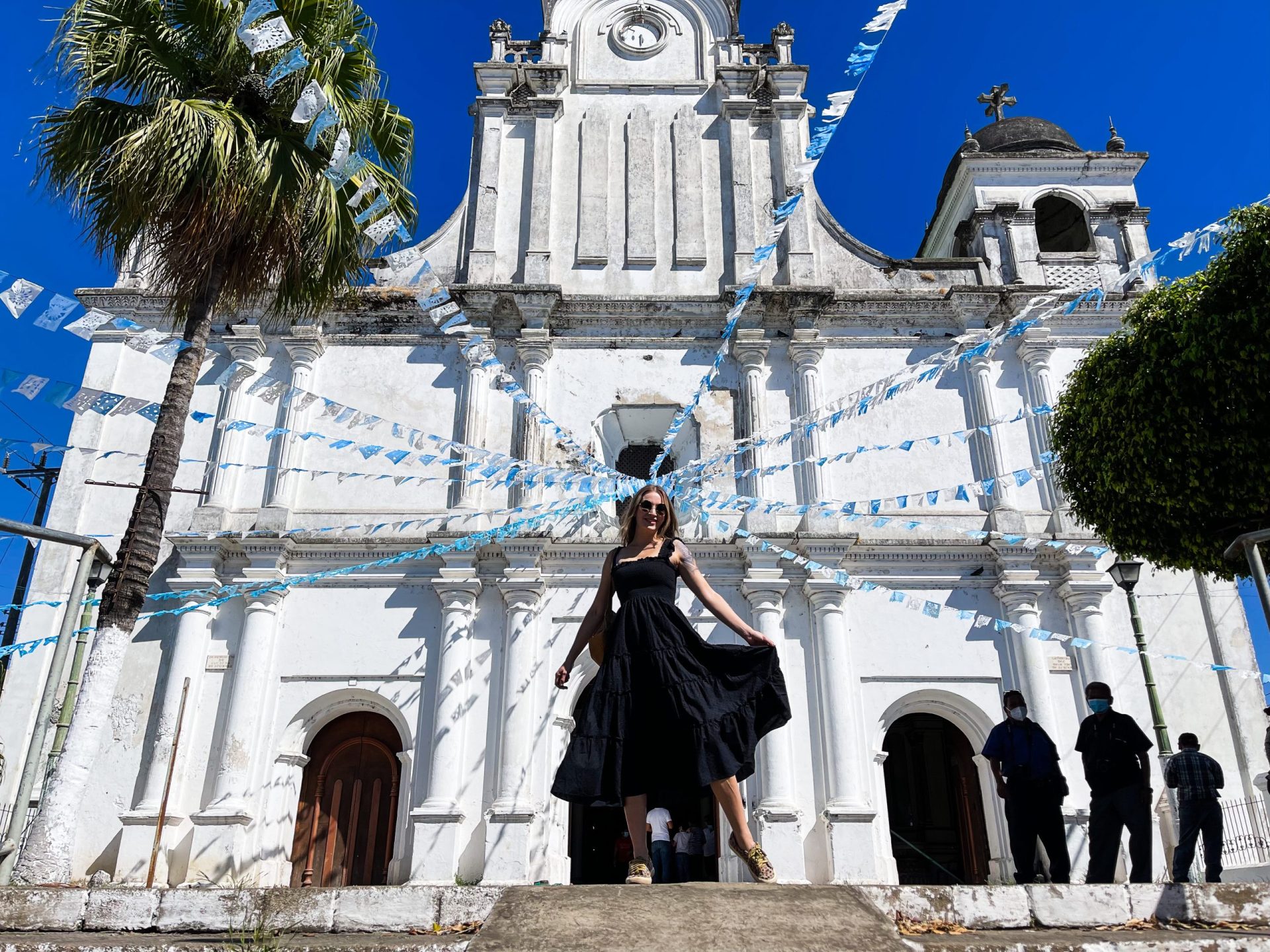
Ruta De Las Flores Tour: What Will You See?
The Flower Route’s name comes from the wildflower bloom that occurs between October and February.
It’s one of the most beautiful roads in all of El Salvador and the most popular tourist route. The best time to see flowers bloom on this route is between November and February. That’s when you can take your pick from amongst vibrant colors or explore little colorful towns.
How to visit Ruta de las Flores in El Salvador
Flores, is home to six gorgeous towns, Ahuachapán, Salcoatitán, Nahuizalco, Ataco, Apaneca, and Juayúa, each offering a unique experience. But, when you’re in Ruta de Las Flores, you’ll want to explore each and everything, so here is a detailed guide:
What Makes Ruta de Las Flores So Special?
The Ruta officially begins in Sonsonate, which provides easy access from San Salvador. You can also start the route La Libertad – one of the main beach towns and a transportation hub.
The Flower Route winds through colorful little towns ending at Ahuachapan.
You can explore the Flower route on your own by Taking a bus: either the Chicken Bus from Juyayua or the local service via La Libertad.
Or a tour – private tours in El Salvador are very affordable.
Apart from the colonial towns, what makes Ruta de Las Flores so unique is its lovely round-the-year weather. Compared to the Central American heat and humidity – it’s super cool and pleasant.
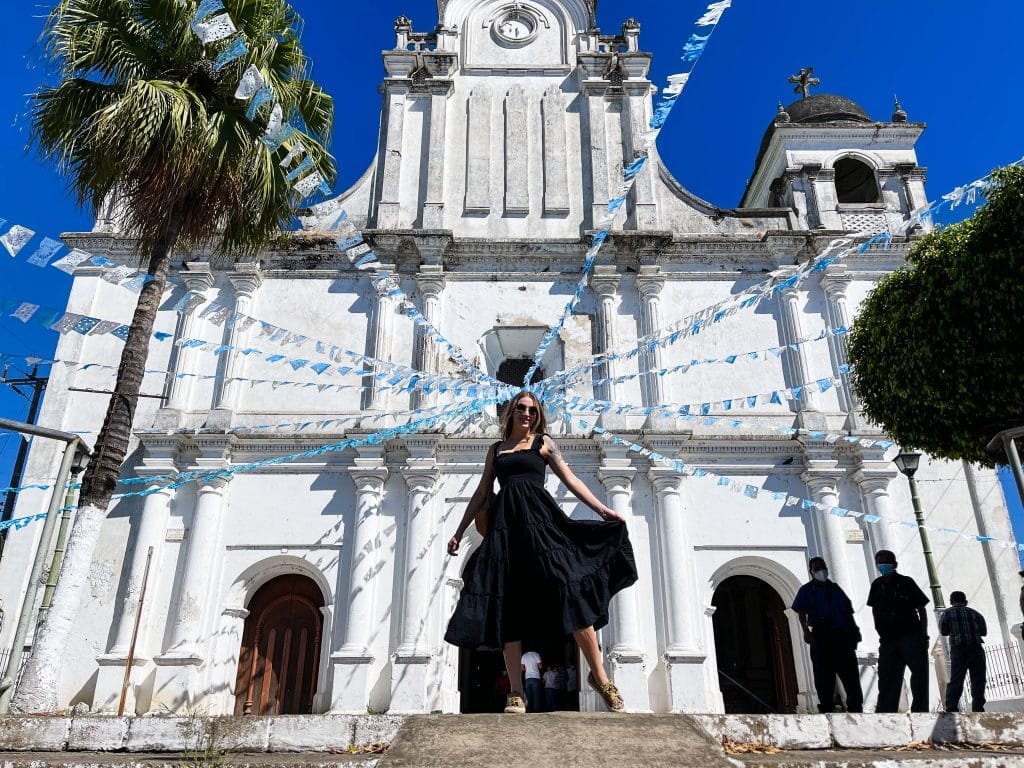
Ruta de Las Flores is home to the best coffee farms in El Salvador. If you’re a coffeeholic, you’ll feel right at home.
What will you see on Flower route (Ruta de las Flores) tour?
City Stops during the flower route
The route occupies approximately 40km of land. Little towns you visit along the route give you glimpses of their ingenuous culture and colonial past.
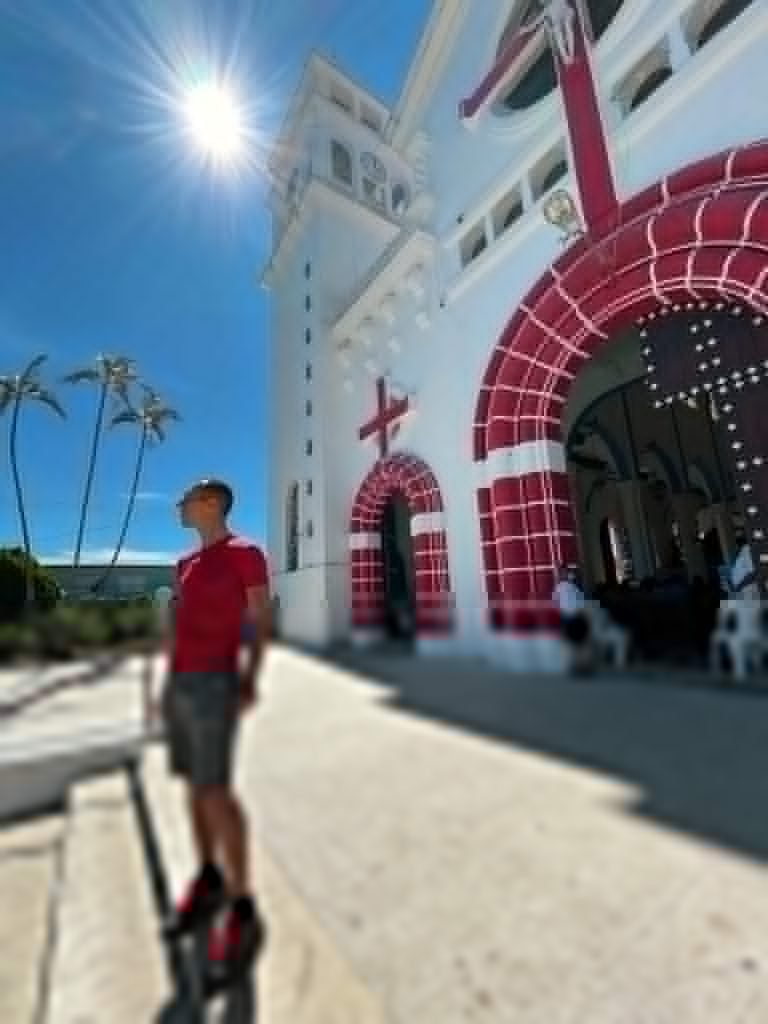


Sonsonate
Sonsonate is the first stop that graces the route and is probably the most common starting point because it directly joins La Libertad. The center point of El Salvador’s beaches and its main beach town. From La Libertad, head over to the first towns,
Nahuizalco and Juayúa.
Salcoatitán
The small colorful town of Salcoatitán is the second stop on Ruta de las Flores. Salcoatitán is located in the department of Sonsonate.
Saint Michael the Archangel
Saint Michael the Archangel has such traditional architecture that it’s hard to miss with its white color. Right around the corner, there is another church in yellow. That also worships Saint Michael the Archangel.
Nahuizalco
Nahuizalco is an ancient town in Ruta de las Flores El Salvador. You can still hear the ingenious language -Nahuat.
It hat was founded by four families from neighboring town Izelco, just 9 km away over 74 kilometers south of San Salvador city.
The people here maintain their indigenous traditions, including a charming night market.
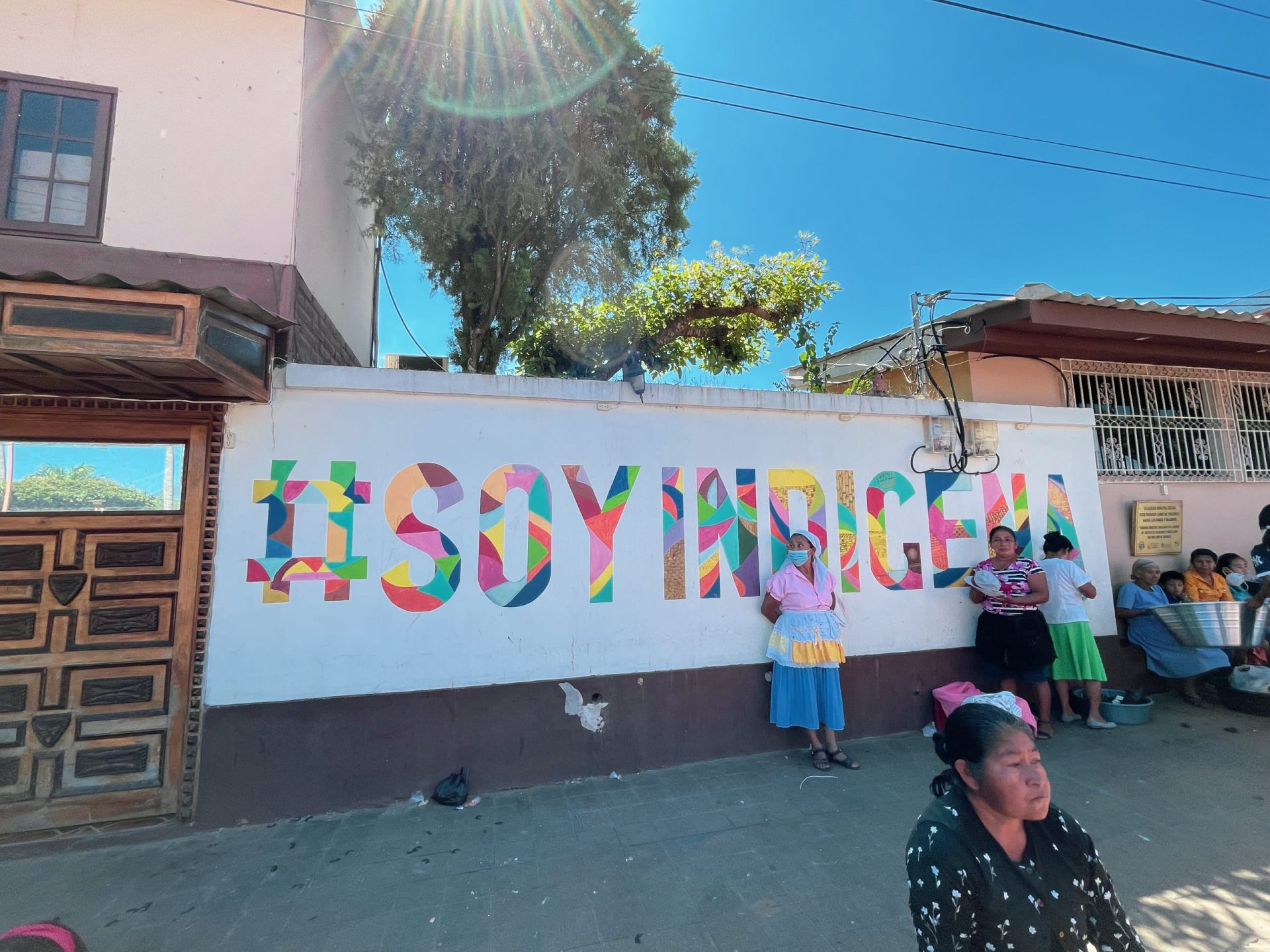
An indigenous town with local markets, workshops, arts and crafts stores and handicrafts shops. Nahuizalco is an attractive place where even a typical day becomes magical.
The night market at Nahuizalco
The night market is a famous attraction for locals and tourists alike. Vendors sell all kinds of produce, meats & seafood, and veggies. They get quite creative with product placement. And of course, they sell flowers.
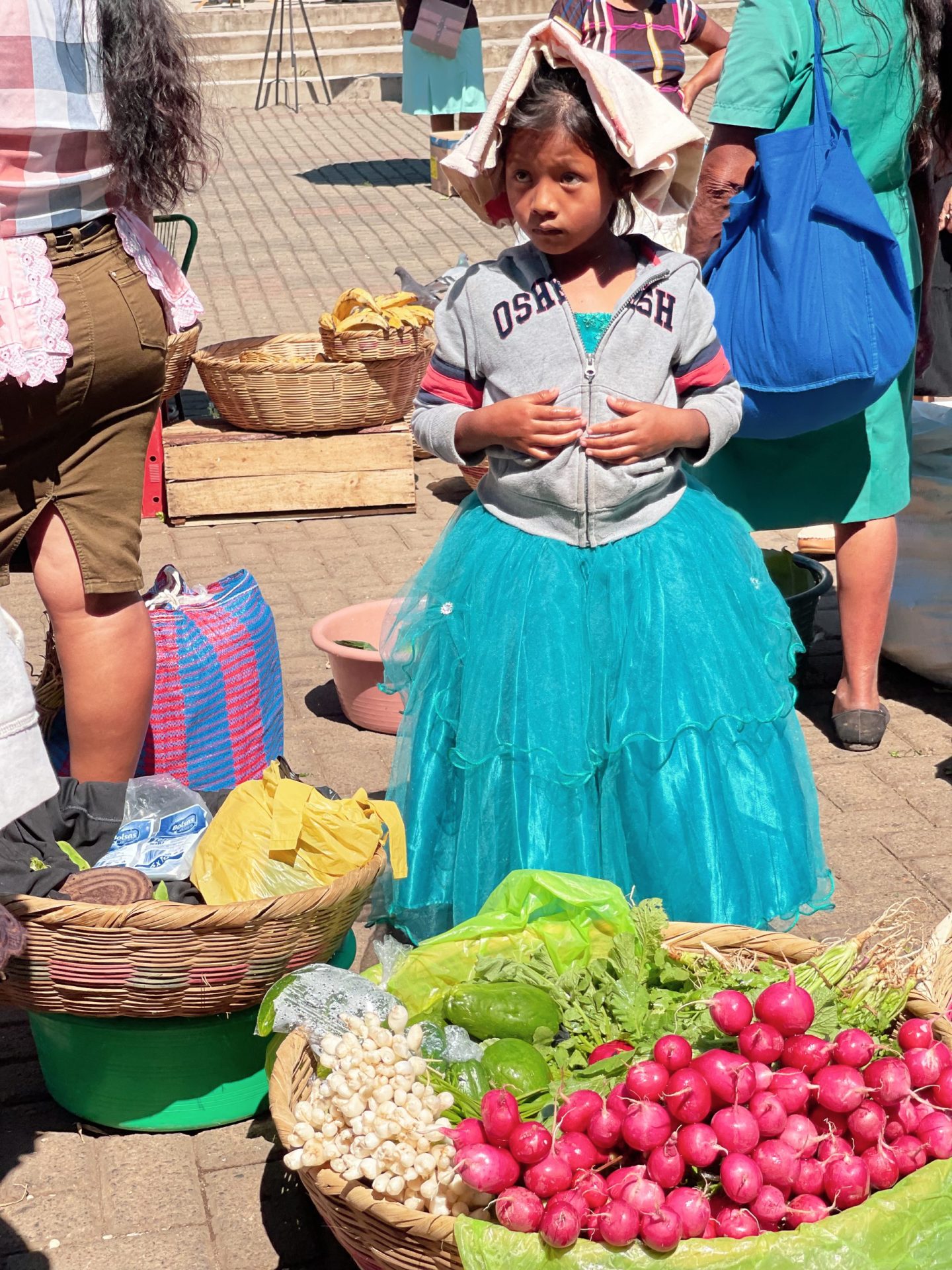
Everything boasts color in their market. It’s one of the most authentic local markets I’ve ever been to. You can buy traditional crafts made by local artisans, such as wooden furniture.
The Casa de la Cultura
The Casa de la Cultura offers free Nahuat classes and a small exhibition of the city’s past. Here is what you’ll see in the museum: indigenous settlements; products forged from wicker materials like baskets or shawls known as “tules” – which means cotton in Spanish.
Juayúa
Juayúa is small town nestled in the mountains of Sonsonate, Juayúa is in western El Salvador. It offers stunning landscapes and viewpoints. Being in the mountains gives Juayúa a certain distinction. It’s 7 gorgeous waterfalls are one of the main attractions.
The Feria Gastronomica in Juayua
The Feria Gastronomica in Juayua is a vibrant event that brings together locals and tourists to eat delicious food and drinks some beer with friends while enjoying the festive atmosphere. For under $10, you can get a plate of meats and seafood. And lots of samples as you go through the vendors’ tents.
- barbecued meats-chorizo cuts cooked on sticks over an open fire;
- shrimp dishes made from fresh prawns
Juayua Waterfalls
The highlight of the Juayua trip- especially for the adventure seekers is the waterfalls. We ended up walking here almost every day because it’s so beautiful and swimming under one waterfall is an experience you won’t forget anytime soon!
Do try out a hike through pristine forest with spectacular views; while hiking, enjoy incredible panoramic mountain vistas – including those 3 volcanoes Izalco, Ilamatepec & Cerro Verde nearby (you might even see a little smoke). Make sure to bring swimwear as there are many swimming opportunities along ́the way.
Salcoatitán
fers an enriching culture to explore. Salcoatitán is home to a 19th-century colonial church, an attractive junction of bricks and stones. Salcoatitán is also where the annual festivity of San Miguel.
Archangel takes place.
Apaneca
Take a glimpse at dreamy cobble-stoned streets and colorful houses in Apaneca, the next city stop. What makes Apaneca special is its two scenic crater lakes, which make the entire town look like a piece of heaven. Apaneca also has beautiful churches and local markets, so keep that architectural eye keen!
The picturesque city of Apaneca is a top tourist destination high up in the mountains. It combines adventure and culture and is a must-stop on Ruta de las Flores tour. There are many cool attractions like hiking trails that will lead you through natural parks filled with forests & streams.
Cafe Albania and The Biggest Maze in Central America
Head to Cafe Albania, on the outskirts of Apaneca, and get lost in their maze. It’s one of the most popular stops along Ruta de las Flores.
It was built using more than 2,000 cypress trees — painstakingly planted to give this hedge labyrinth its current appearance–to create an intricate.
I expected it to be just a fun little maze action. But the Apaneca maze is actually no joke! After 40 minutes of running around (which, indeed, was fun), we had to ask an associate inside the maze for help.
And after we got a hint – it still took about 20 minutes to get out of the Apaneca Maze.
Pro tip: Go to the cafe and enjoy some Salvadorian coffee while watching others struggle, just like you did when first entering the Apaneca maze!
How to get to cafe Albania?
The most prominent maze in El Salvador is located on the outskirts of Apaneca, and it’s one that visitors can easily find. It’s located off the main road – look for the Cafe Albania sign.
Apaneca Maze Labyrinth
The Cafe Albania in Apaneca offers an intriguing maze labyrinth to explore, so if you’ve always wanted to act out as a character in an adventurous movie, here’s your chance!
Ziplining On A Bike in Apaneca Maze Labyrinth
An unforgettable experience in Apaneca is ziplining over the colonial town on a bike, which is something you need to absolutely try! Thi zipline is built differently from your traditional zipline and offers you the chance to actually ride on a bike! Whether you’re a beginner or a pro at adventure, this experience will make you love Ruta de Las Flores with every passing minute.
The Church of St. Andrew the Apostle in Apaneca
The Church of St. Andrew the Apostle in Apaneca, El Salvador, is a beautiful and historical church that was built over 200 years ago by Spanish settlers.
The bell tower has been preserved from when it first became operational with its rich colonial style design elements such as wide open windows alongside white-washed walls for added beauty to this already impressive building.
The Green Lagoon
The impressive green lagoon is located on the dormant Ahuachapan volcano and can be enjoyed by visitors who do not want to swim in its waters. Nearby you can find another lagoon- Las Ninfas Lagoon, which lies inside a dormant volvano.
Ataco ( meaning “place of elevated water springs”.)
Concepcion de Ataco is a small town situated in the western mountain ranges of El Salvador. It’s one of the last stops along The Flowers Route (Ruta de la Flores). This area was first settled more than 2000 years ago by indigenous people called Pipiles . who lived off what resources there were available at their time: hunting animals like Deer or Jaguar cats plus gathering fruits
How to get to Ataco
Ataco is only a few minutes from Apaneca and slightly different from Juayúa and Apaneca. Actually, quite different. Stepping in Ataco will make you think you’ve been transported to another world. Instead of sporting typically painted houses, the town of Ataco has dreamy and vibrant paintings on the walls of its houses. For anyone who’s a fan of art, the walls of streets will really do the trick. But that’s not all Ataco has to offer; the town also has its own coffee plantations, so you can count on a cup or two.
Ataco murals
And, of course, the murals. The best things about Taco’s murals is that each of them depicts actual scenes from Salvadorian day-to day life. You can learn a big deal about the culture of El Salvador just by walking around Ataco.
If The Feria Gastronomica in Juayua wasn’t enough to experience Salvadorian food – Ataco has a variety of restaurants. Must try: Pupuseria Primavera or Pupuseria Cielito Lindo.
Ahuachapan
Ahuachapan is relatively crowded and busier than all the other towns, which is also why it’s skipped mainly by touring companies. But, if you’re into palm trees, colorful flowers, fine churches, and exploring mural-covered walls, then Ahuachapan might even claim your heart!
What to Wear for Ruta de las Flores tour
Ruta de las Flores is not a place or town. It’s a chain of towns – each with its signature sights and activities. On this colorful route, you will find it all – from volcanic lakes and beaches to tropical waterfall hikes and picture-perfect colonial towns. Even though they are all located in a similar climate, you want to bring a variety of clothes. Unless you know exactly what your Flower Route plan is.
- Swim suit
- A pair of cute shorts or leggings
- A flowy maxi sundress or two
- A hat
- Sandals or sneakers – whatever you are more comfortable walking in
If you are planning on hiking:
- Raincoat
- Quick-drying shirt
- Hat
- hiking shoes
What else will you see at the Flower route El Salvador
Thankfully, that’s not all the towns have to offer. You can take a look at the several murals, city markets, or if you’re a foodie, take your chance at the local gastronomic tours and food festivals. If you’re interested in binge-eating, make sure you attend the Juayua and Ataco food festivals, where you can enjoy pupusas, steaks, pizzas, coffee, and more!
How to get visit the Flower route
You can explore the Flower route on your own by Taking a bus: either the Chicken Bus from Juyayua or the local service via La Libertad.
Or a tour – private tours in El Salvador are very affordable.
El Carmen guesthouse
If you are looking for an authentic experience in El Salvador, this is it. The coffee estate on the Ruta des Flores has a 1930s house now converted into 6 bedrooms. The hotel features all modern amenities, including wifi access, so your trip won’t feel like predecessor days! ne of the best parts? Drinking some of THE best coffees grown here–from 4k feet high up near Volcanic soil full flavor.
Rancho Allegra – Coatepeque Lake.
If you’re looking for a relaxing day at the lake, head to Coatepeque Lake. The views from its shores are gorgeous and it offers many activities including swimming (of course), fishing on docks or boat rides with music playing in background! If there’s any food dish that will make your taste buds sing then this is definitely one of them – fresh whole fish grilled just how we like ’em; served up alongside some shrimps if preferred along side our favorite margarita cocktail while listening live performances by local musicians.
Main stops in Ruta de las Flores
Nahuizalco
Juayua
Apaneca – a town with cobbled stone streets, quick to explore by foot. The nearby crater lakes are nice for hiking and have well-marked trails (5km from town).
Ataco –
Ruta de las Flores – where to stay
El Carme guesthouse
If you are looking for an authentic experience in El Salvador, this is it. The coffee estate on the Ruta des Flores has a 1930s house now converted into 6 bedrooms with all modern amenities, including wifi access, so your trip won’t feel like predecessor days! You’ll be able to view the production process from the start-to-finish while staying at their adjacent 5-room guesthouse surrounded by lush gardens just outside Ataco town center, where interesting activities await, such as drinking some of THE best coffees grown here–from 4k feet high up near Volcanic soil full flavor-rich beans mean plenty antioxidants too.
Rancho Allegra
If you’re looking for a relaxing day at the lake, head to Coatepeque Lake. The views from its shores are gorgeous, and it offers many activities, including swimming (of course), fishing on docks, or boat rides with music playing in the background! If there’s any food dish that will make your taste buds sing, then this is definitely one of them – grilled fish and live performances by local musicians.

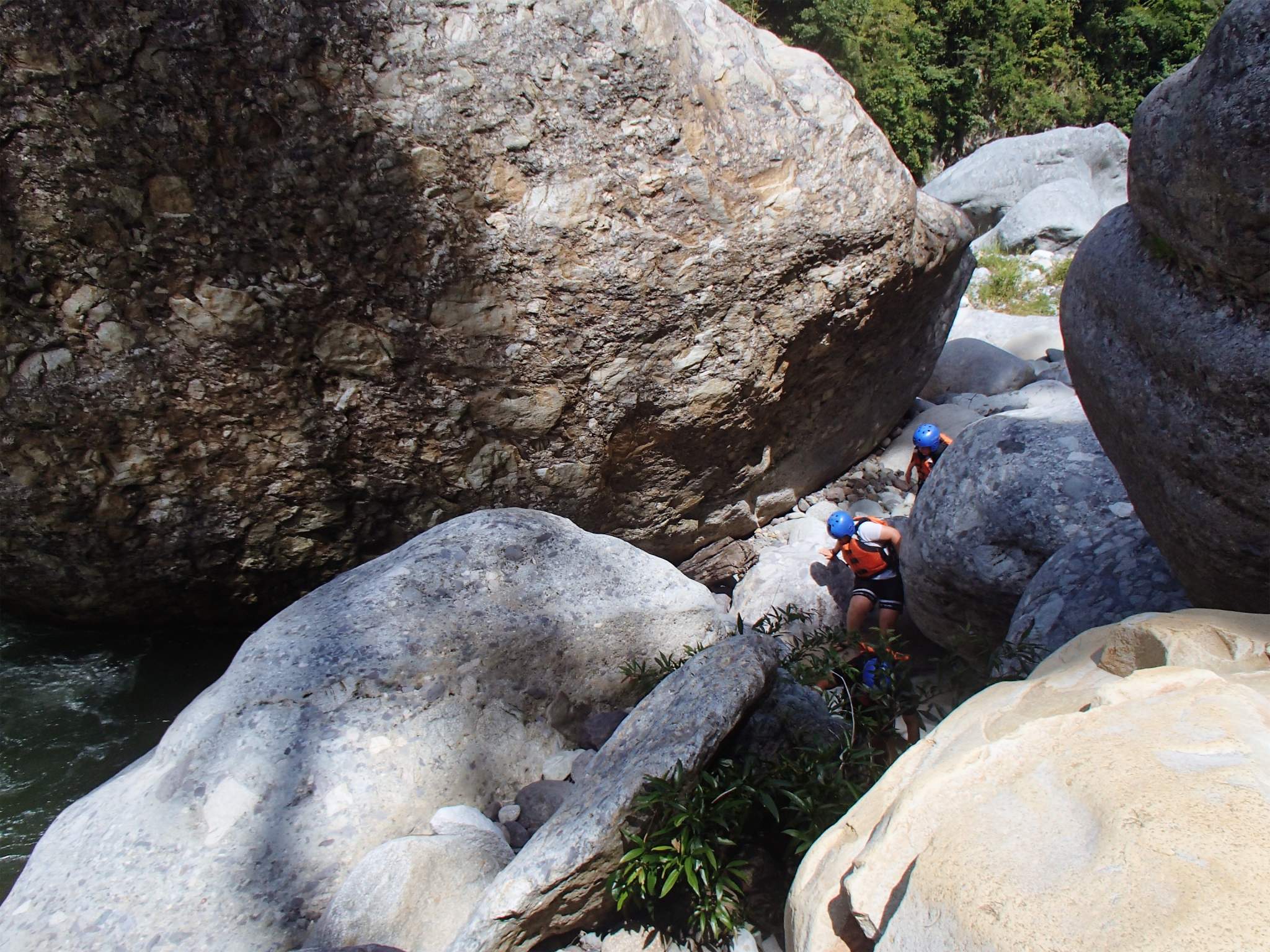
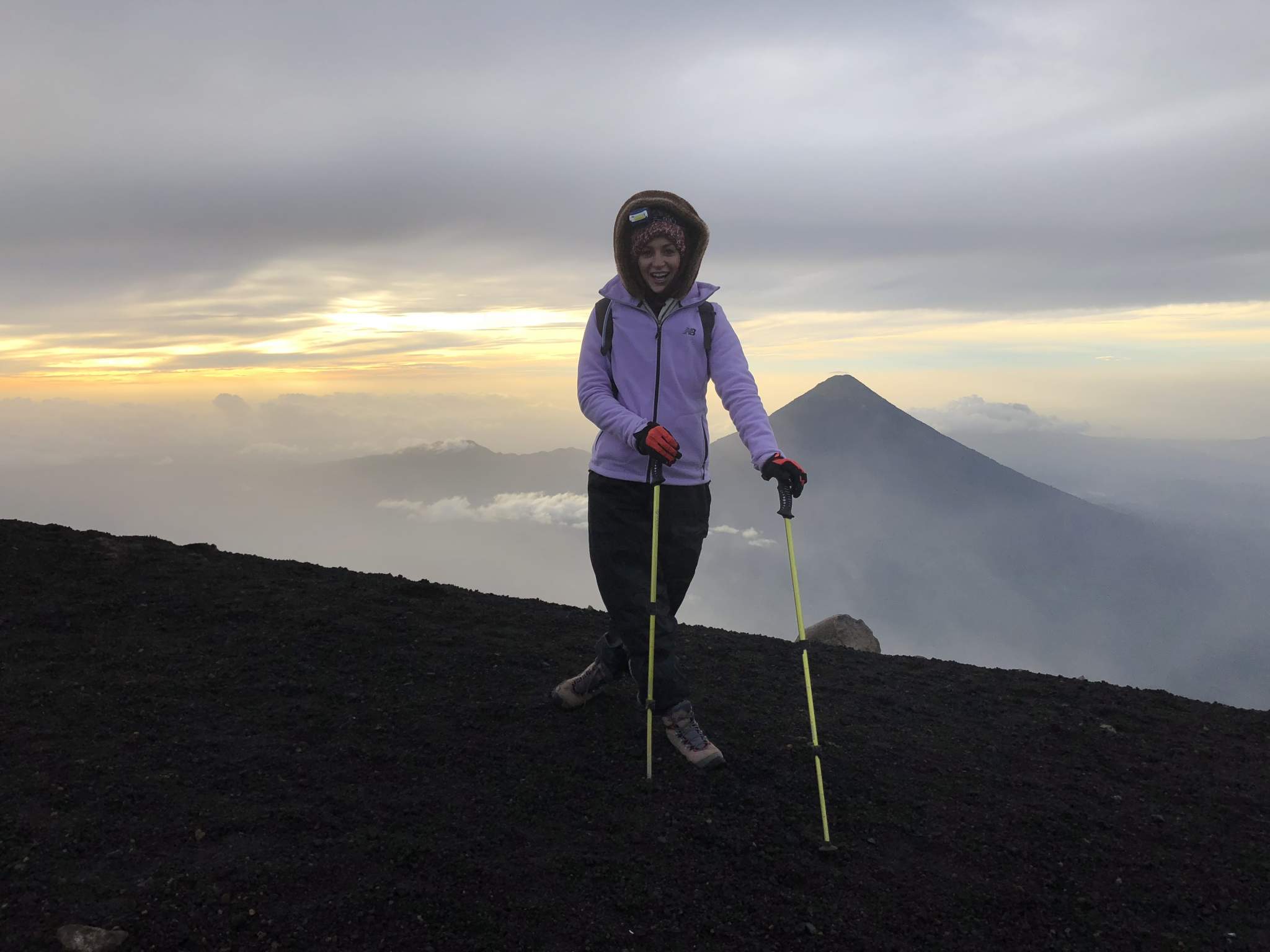
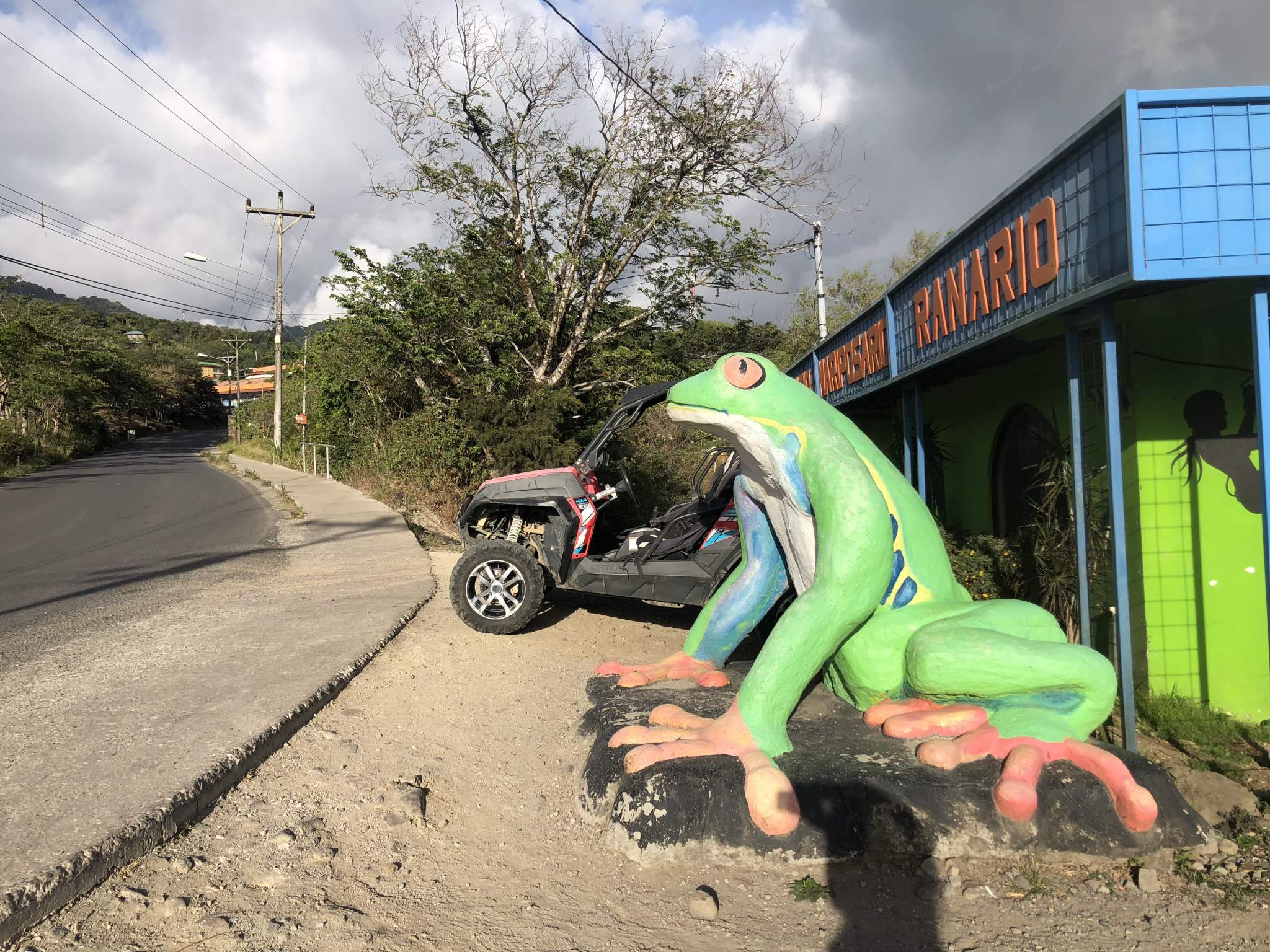
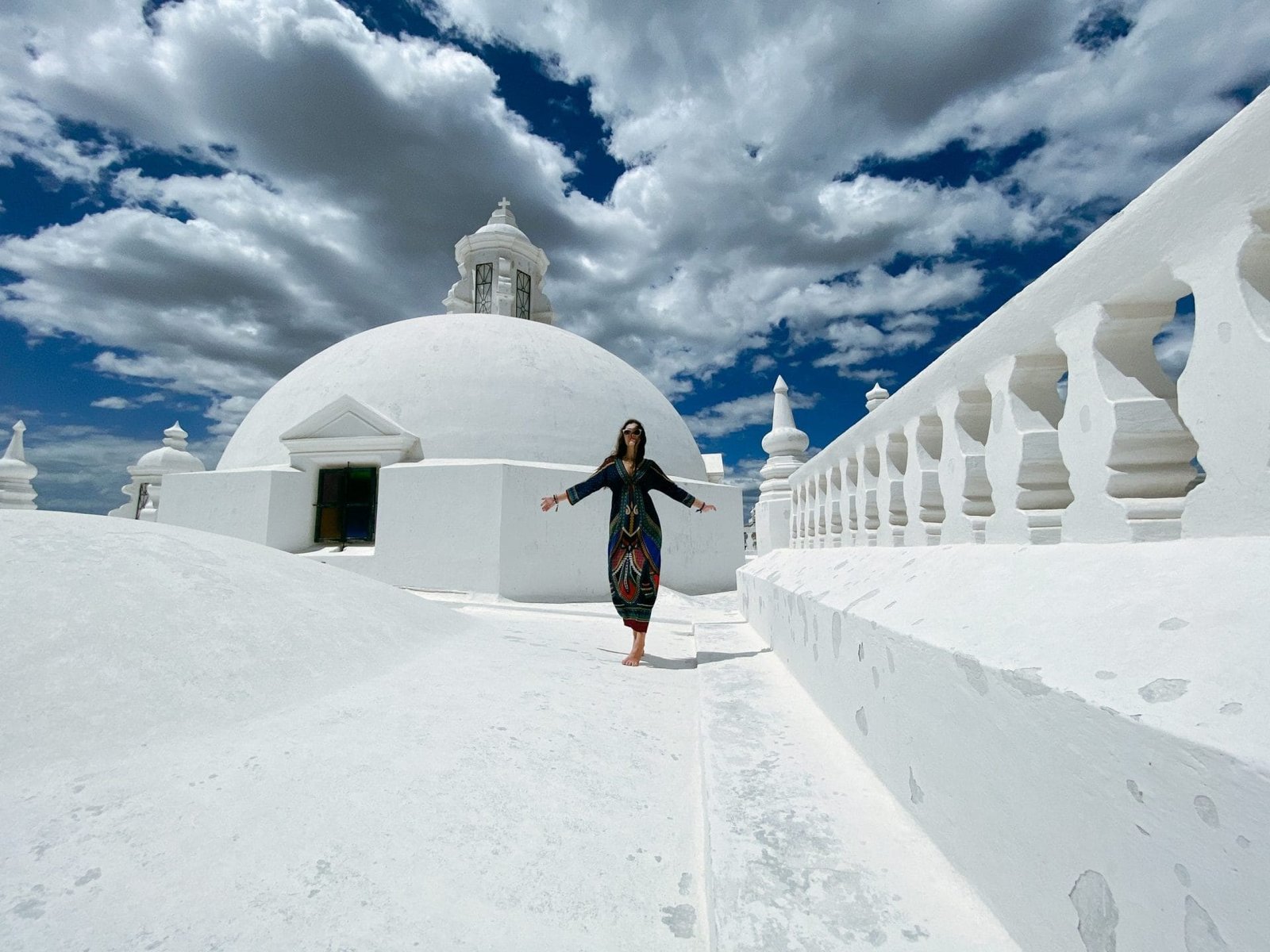
Pingback: El Salvador Travel: From Rainbow Slide To Flower Route -